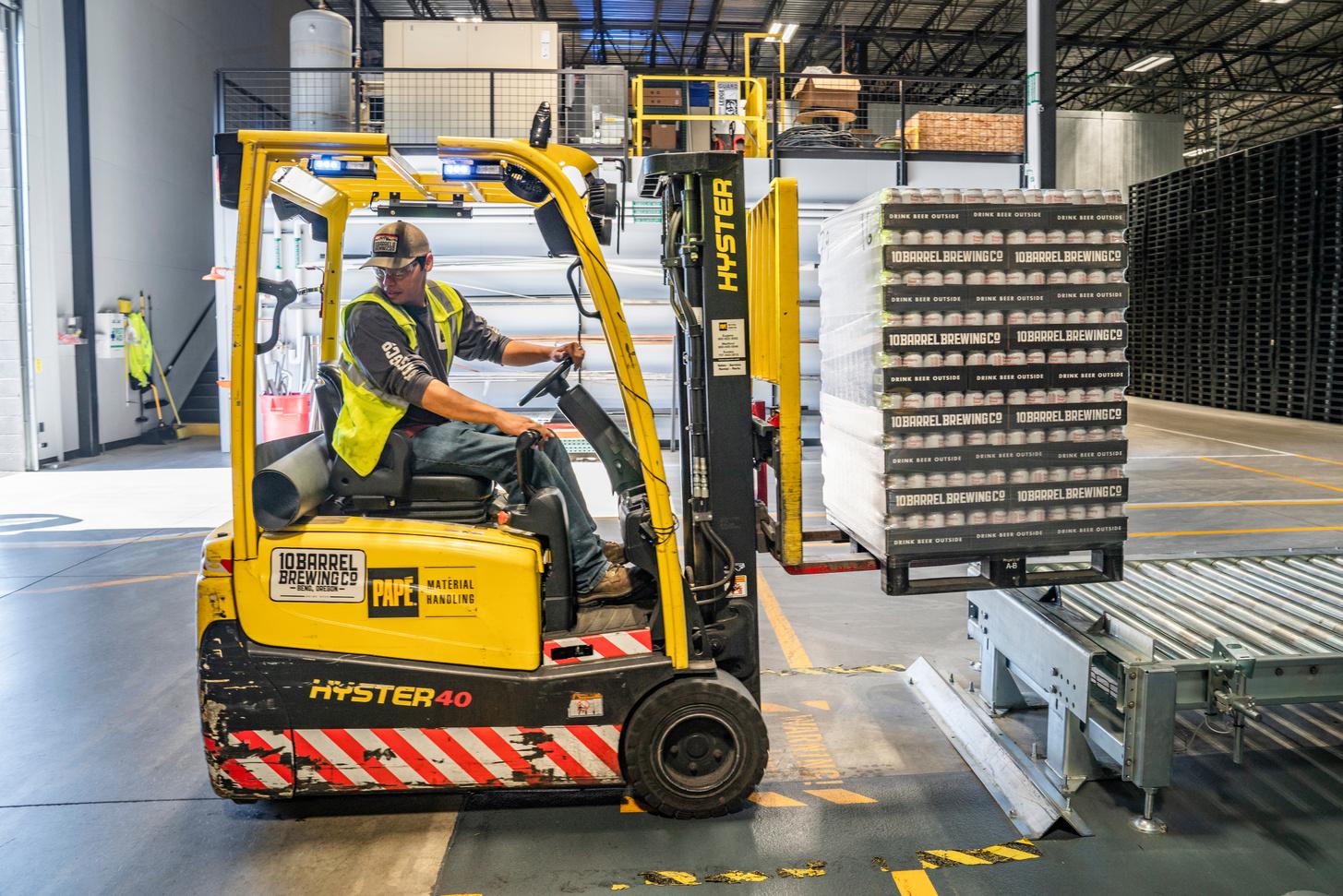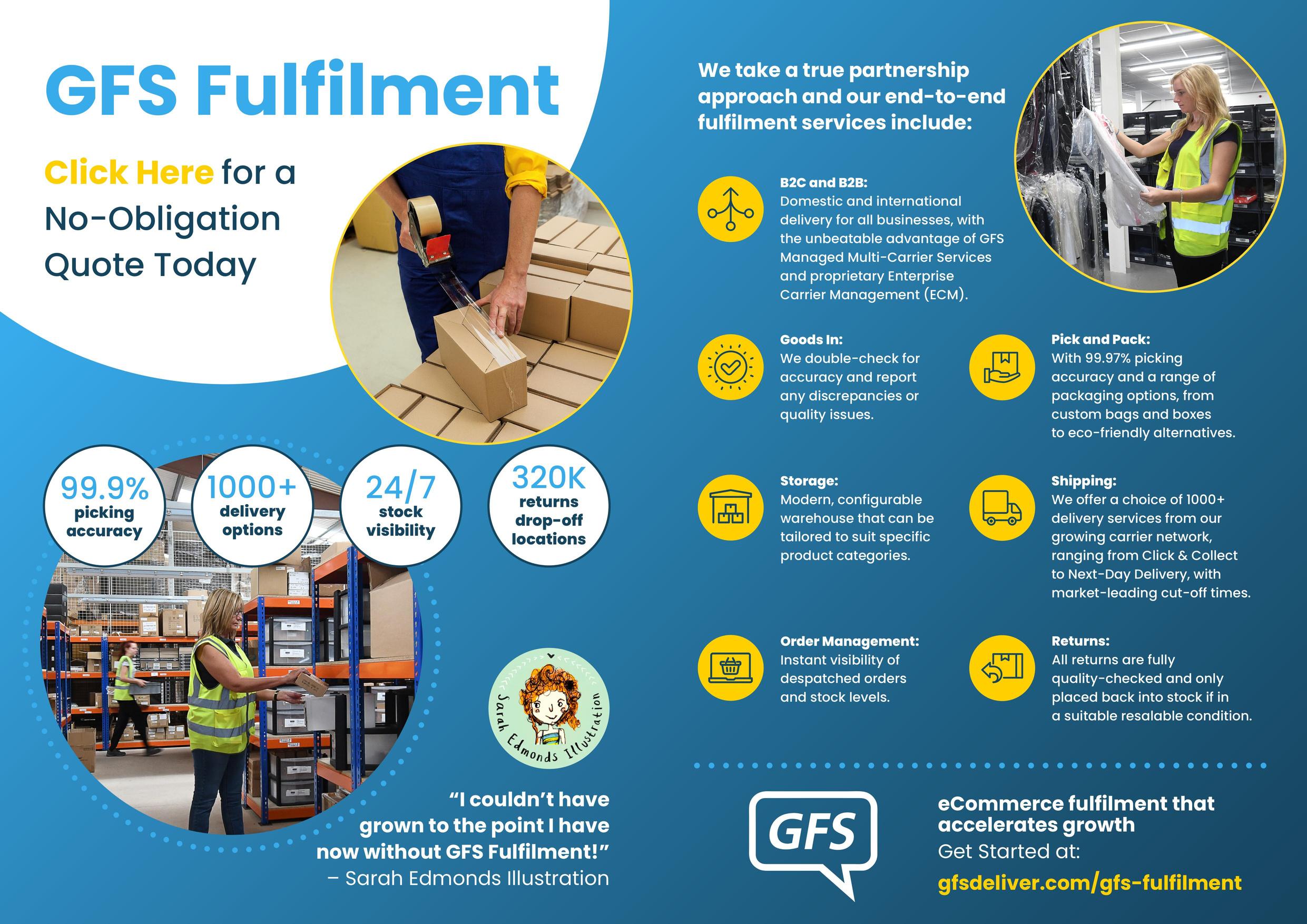
4 minute read
OPTIMISING THE GOODS IN PROCESS
By Rob Gamage, Managing Editor at Modern Retail
The Goods In process is a vital component of ecommerce fulfilment. It involves receiving, inspecting, and documenting incoming inventory. This process ensures accurate stock control and sets the groundwork for efficient order fulfilment and satisfied customers.
Advertisement
Accurate Goods In processes ensure products are in the condition they should be before being made available for sale while minimising errors and delays.
Rachel Delasalle, Regional Operations Manager at ILG concurs:
“A successful fulfilment operation is fundamentally driven by an efficient Goods In process. The Goods In department is the first touchpoint of the end-to-end fulfilment process and accuracy of the inbound process has a significant impact on the rest of the fulfilment operation.”
Preparing for Goods In
To prepare for the Goods In process, retailers should focus on three key areas: space, equipment, and personnel. Sufficient space is necessary for receiving, sorting and organising inventory. Having the right equipment, such as forklifts and barcode scanners streamlines the process. Adequate staffing levels and proper training ensure efficiency. Additionally, implementing a robust inventory management system enables accurate tracking, real-time visibility, and seamless integration with other departments.
Rachel Delasalle continues, “An organised approach to Goods In management is essential. It’s important to keep accurate logs of inbound stock due and open POs, as well as efficiently store records and documentation of shipments received to provide reliable traceability of stock.”
Receiving the Goods
The process of actually receiving the goods involves unloading, documentation and inspection. Depending on the type of goods, the level of inspection may vary. Conducting quality checks is essential to ensure customer satisfaction and minimise returns, as Johannes Panzer, Head of Product Strategy, E-Commerce at Descartes outlines:
“Quality inspection depends to some degree on the supplier and the type of goods being processed but, generally speaking, we suggest spending more time on the quality check at Goods In, as this lays the groundwork for a streamlined order fulfilment process. Errors that happen at Goods In can only be resolved later in the process with great effort.”
Debra Grimwood, Marketing Manager at Kardex agrees:
“You also have the ability with an efficient goods in procedure to hold suppliers accountable for the goods they ship. Meticulous inspecting and documentation can be addressed. The documentation here is critical in offering concrete evidence in case of any disputes and ensures suppliers meet their obligations.
“But for many it comes down to controlling costs and maximising efficiency. By processing incoming goods and verifying accuracy and resolving any issues, it will minimise the risk of holding onto extra or incorrect inventory. This reduction in carrying costs, combined with warehouse space utilisation will help maximise operational efficiency and overall profitability.”

Receiving the goods is not all about quality control, of course, but also an important stage in ensuring efficient inventory management. Debra continues:
“Inventory accuracy is key here. A well-executed Goods In procedure will ensure that incoming goods are accurately received and recorded in an inventory system. The checking of received items against purchase orders, verifying quantities and inspecting quality are all essential in maintaining inventory accuracy. Efficient processing of incoming stock and updating the inventory system enables accuracy of order picking, packing and shipping.”
Electronic Product Code, a reader via which the information can be read, and a transmitter unit for data transmission.
"Advantages of RFID technology include fast acquisition of data without visual contact, in contrast to barcodes. Because objects do not need to be aligned, it is possible to capture larger amounts of data and several data carriers in a fraction of a second.”
Labelling and Sorting
Technology can make a huge difference to the efficiency of receiving goods. Edward Hutchinson, Managing Director of BITO Storage Systems, highlights RFID as useful tech:
“RFID technology is being used more frequently in logistics for incoming goods, as well as for outgoing, tracking, inventory management and order picking.
"The RFID system consists of an RFID transponder that has an identification number or an
An efficient labelling and sorting system improves order processing, reduces delays, and ensures accurate inventory tracking. It helps employees locate items quickly, minimises errors in order fulfilment, and contributes to timely delivery. Investing in effective labelling and sorting systems, including barcode labels and automated technologies, is crucial for efficient operations and customer satisfaction.
Johannes Panzer suggests to:
“Always ensure goods have been labelled with the correct barcodes. As part of a streamlined process, the printing of the barcodes should take place during Goods In. If the products are too small to be labelled individually, we suggest you use fixed bin locations or boxes to store the items, which carry the respective item barcode.”
Storage
Proper storage of goods is crucial for efficient operations and customer satisfaction. Different types of goods may require specific storage conditions and adhering to these requirements ensures product quality and minimises the risk of damage or spoilage.
Johannes Panzer outlines the need to tailor the storage to the specifics of the goods themselves:
“Put away goods based on how and when you expect them to be sold:
Big pallet shipments: Identify a replenishment/bulk area where you store them, when you know the pick face in the warehouse cannot be used for storing them. Big pallet shipments for which a drop/sales campaign is coming up shortly: Put them closer to the packing area in order to keep the length of picking routes for your team to a minimum.
Small shipments: check at Goods
In if items have been ordered on demand because there are open customer orders waiting to be fulfilled - and then bring them to the packing area to process the orders further. Small shipments ordered for regular restock purposes: Depending on your warehouse setup and storing strategy, put them wherever appropriate (e.g. there may be zones set up for hanging garments or various racks in place for products of different sizes).”
Conclusion
Optimising "Goods In" processes is crucial for the success of fulfilment operations. By optimising their Goods In process, ecommerce businesses can enhance operational efficiency and maximise customer satisfaction.

Debra Grimwood of Kardex agrees:
“While the Goods In procedure may not always be in the limelight, its importance cannot be understated. From maintaining inventory accuracy and streamlining order fulfilment to ensuring quality control, holding suppliers accountable, controlling costs and preserving data integrity, an efficient Goods In procedure will drive operational excellence and customer satisfaction. By recognising its significance and investing in optimisation, businesses can elevate their fulfilment capabilities and gain a competitive edge in today’s fastchanging ecommerce market.”












